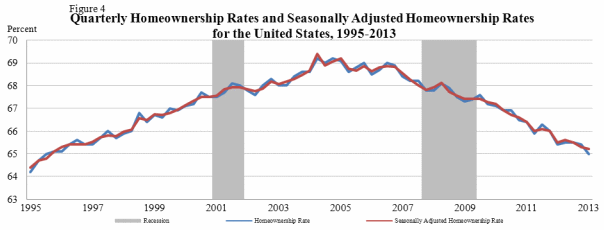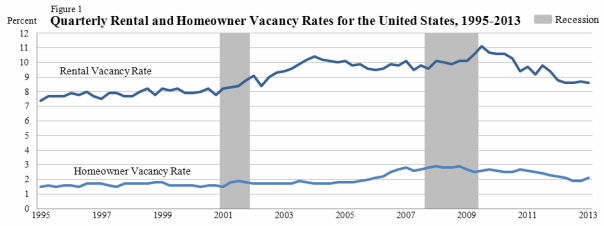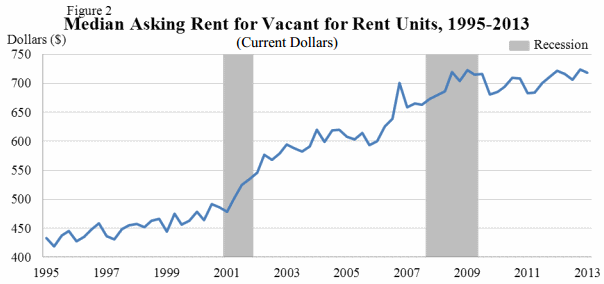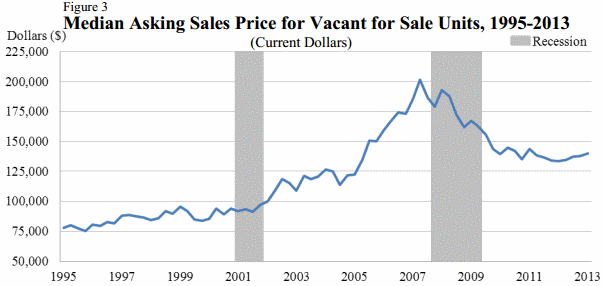The U.S. vacancy rate and the rate of homeownership both declined in the first quarter of 2013 with the homeownership rate hitting the lowest level in 17 years. According to the Census Bureau the rate of homeownership in the country declined from 65.6 in the fourth quarter of 2012 to 65.2. The rate in the first quarter of 2012 was 65.5 percent. The first quarter 2013 rate is the lowest rate since the fourth quarter of 1995 when it was 65.1. The vacancy rate was 8.6 percent, 0.2 percentage points lower than one year earlier and 0.1 percentage point lower than in the fourth quarter of 2012.

There were 133.08 million housing units in the U.S. in the first quarter, an increase of 486,000 from one year earlier. Of those 114,643 were occupied, an increase of 520,000 and 18.4 million were vacant, essentially unchanged from the year before. Of the total housing stock 74.5 million units or 56 percent were owner occupied and 46.1 million or 30.2 percent were occupied by renters.

Vacant housing stock represents 13.9 percent of the total and 10.5 percent is considered to be year-round housing while 3.4 percent is for seasonal use. Units for sale only make up 1.2 percent of housing stock and units for rent 2.9 percent. For various reasons including occasional use by the owner or a person with another usual residence, 5.7 percent of stock was being held off of the market.
The vacancy rate for rental housing was higher inside of principal cities (8.6 percent) than in the suburbs (7.8 percent) and lower than the rate outside of metropolitan statistical areas (MSAs) (10.6 percent). The suburban vacancy rate was down from a year earlier while rates inside of principal cities and outside of MSAs did not change in a statistically significant manner.
The vacancy rate was higher in the South (9.9 percent) than in the other three regions. The Midwest had a rate of 9.5 percent while the Northeast was at 7.2 percent and the West was 6.9 percent. The rate in the South was down from a year earlier while there was little statistical difference between the periods in the other three regions.
The median asking price for vacant rental units in the first quarter was $718. The median asking price for a vacant unit that was for sale was $139,800.


Homeownership rates were lowest in the West at 59.4 percent, and highest in the Midwest at 70.0 percent, a pattern that has been in place since at least 2007. The Northeast rate was 62.5 percent and the South was 66.5 percent. The Midwest was the only region to post an increase in homeownership on both a quarterly and annual basis.
As always the oldest age cohort, those over 65 years, had the highest homeownership rate at 80 percent and those under 35 years the lowest rate at 36.8 percent. Non-Hispanic whites, again as usual, had the highest rate of homeownership at 73.4 followed by all other races at 54.6 percent, Hispanic at 45.3, and Black alone 43.1 percent. Not surprisingly households with family income equal to or greater than the median had a rate of 80.0 percent while those with incomes below the median had a homeownership rate of 50.0 percent.







